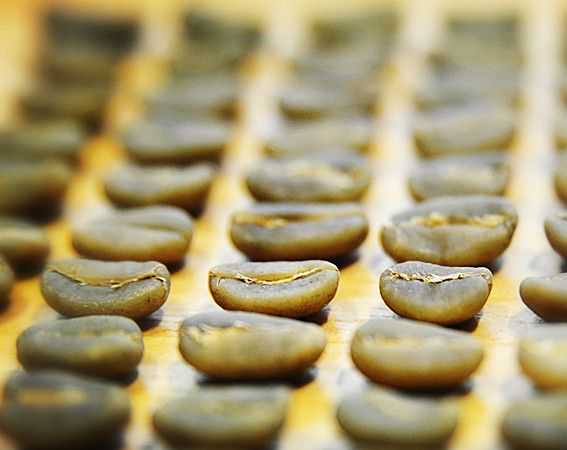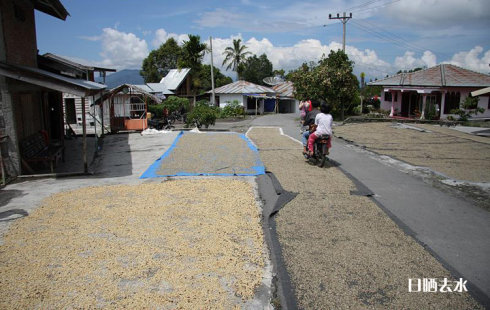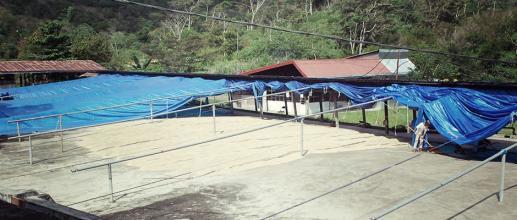Indonesia Mantenin Sumatra Coffee beans what should be prepared for the introduction to hand-made coffee?
When we start to be interested in coffee, we can't help but wonder, how is coffee made? There are too many production methods, which one tastes best?
By observing the coffee players around you, you will find that no matter which method they prefer to use, they are bound to dabble in making coffee.
Hand-brewed coffee is called "the most primitive and purest form of coffee expression" in the industry, and it is also the only way to make coffee that can be "roughed out and refined".
Making coffee, as a craft, there are not many people who can really teach it to teachers, and people as enthusiasts are obviously more passive in this matter.
For beginners to make coffee by hand, the necessary equipment must be prepared. Collecting the cheapest set from the Internet costs 300 to 400 yuan, but is it really good for us to learn to make coffee by hand?
For beginners to choose and buy hand-made equipment, we should consider whether it is "appropriate or not". After all, low cost-effective products are not suitable for anyone.
Below, I will follow the steps of making hand-brewed coffee to introduce the hand-brewing coffee utensils suitable for beginners:
Coffee bean grinder
In fact, in the whole novice rush into the door equipment recommendation, only the money for the coffee bean grinder should not be stingy. If we have an excellent coffee bean in hand, they have a good planting environment and excellent roasting, then it is very important for the grinding of coffee beans. Without a good grinder, it would be too wasteful.
There are two kinds of grinders: breakup action and electric. Generally, electric grinders have the problem of losing coffee flavor due to the heat of the product, which is caused by the excessive speed of the cutter head. In general, the hand mill is smaller and more portable than the electric mill, and the price is much cheaper. At the same time, because the rotational speed is very slow, there is no heating problem in grinding beans.
But the efficiency of the electric mill can not be surpassed by the hand mill, but the performance of the low-end electric mill is really uneven.
The grinding is uniform, and the fine powder is less, and the performance is gratifying. Although the entry price of about 1360 yuan is slightly higher, this is the entry style of the electric grinder.
Introduction to manual coffee grinder:
HARIOMSCS-2TB
Hand mill with excellent feel, thick and wear-resistant. The ceramic grinding core can prevent electrostatic adsorption, and it doesn't take much effort to grind except the coffee beans with very hard texture.
Second, hand punch pot
As the soul of hand-brewing coffee, its pattern is not too many, only distinguished from the spout, there are only two kinds of thin-mouthed pot and crane-billed pot. For beginners, it is best to choose a thin-nosed pot so that you can control the current more easily.
It is heated by the base and cannot be cooked directly by fire. The mouth of the thin mouth is smooth and regular, the base can choose the ideal water temperature, and has the function of heat preservation. It is recommended to buy a smaller one.
Third, filter cup
When it comes to filter cups, we have to mention Hario's V60 series, which includes all the mainstream materials of today's filter cups: ceramic, resin, glass and stainless steel.
The market share of V60 is very high, and the filter paper it consumes is also very easy to buy. V60 recommends glass material and bleached filter paper, which has the least effect on coffee flavor.
Filter paper is divided into raw pulp and oxidation bleaching. Oxidative bleaching is the use of hydrogen peroxide for bleaching, which itself is non-toxic. If the product package is marked with 100% oxidation bleaching, it does not contain other fluorescent ingredients.
On the contrary, the coffee filter paper of the original pulp will have a taste more or less, since oxidation bleaching is theoretically harmless, you might as well give it a try.
IV. Other essential tools
Probe thermometer (accurate to one decimal place)
For a cup of coffee, temperature is the key, mastering the temperature is equal to mastering the release of flavor.
Electronic scale (accurate to 0.1g)
There are no special requirements for electronic scales, just be more accurate.
Coffee cups
As the V60 does not belong to an all-in-one cup and does not have the function of holding coffee, if you drink it alone, choose a coffee cup and load it under the filter cup.
Of all the cups made of glass and ceramic (the inner wall is not painted) is the healthiest because they do not contain organic chemicals in the firing process. We don't have to worry about chemicals being drunk into our stomachs. First, what coffee beans should be used to make coffee by hand? Sumatra, Mantenin, Indonesia
The types of coffee beans are divided into two types, namely, individual products and blends. Single coffee beans and blended coffee are also suitable for different coffee making utensils, if the system is divided, single coffee beans are suitable for filtered coffee production, while blended coffee beans are suitable for pressure extraction to make Italian coffee.
Chen Lei: hand-made coffee beans are recommended
The method of brewing coffee by hand belongs to the production of filtered coffee, so hand-brewed coffee beans are usually made of single coffee beans. Of course, it is not absolutely here, ha. Chen Lei has also brewed coffee beans by hand, and it tastes good.
Second, hand-washed coffee beans are recommended:
Hand-brewed coffee beans are recommended. Chen Lei will recommend three types of coffee beans, namely, Colombia, Mantenin and Yejia Snow Coffee. The reason is that these three types of coffee represent different flavor series, and when you put them together, you can feel the obvious difference.
1. Colombia: Chen Lei likes to define the taste of Colombian coffee beans as neutral, main nut aroma, slightly sour, and less bitter.
2. Manning: the bitter point is higher, there is almost no sour taste (not absolute), the mellow thickness is high, a kind of coffee bean that Chinese people like very much, taste similar to chocolate.
3. Yejia snow coffee: the acidity is high, the bitter point is low, and the bright fruit is sour and sweet with some flowers.
This is also Chen Lei's most intuitive understanding of the taste of these three coffee beans, so they are defined as sour, medium and bitter according to their taste. If you are interested, you can try these three kinds of coffee beans separately. I'm sure you can find your favorite flavor.
Country: Indonesia
Grade: G1 3 times by hand
Producing area: Lindong, Sumatra
Treatment method: traditional wet planing method
Altitude: 1100-1600 m
Flavor: baked toast, nuts, pine, caramel, herbs
The most famous coffee producers in Asia are the islands of Malaysia: Sumatra, Java and Kaliman. Sumatra Manning coffee from the Indonesian island of Sumatra is the most famous.
Mantenin coffee is produced in Lake dopa in Sumatra Province and Lake Tawa in Aceh. This is the famous "Shuangman of the two lakes". What the Shuangman of the two lakes have in common is that they are both thick and mellow. the difference is that the mantenin of Lake dopa is more stuffy, low and even has the smell of immortal grass, while Mantenin of Lake Tawa is more acidic, sometimes with a smell of cedar or wood.
During the Japanese occupation of Indonesia during World War II, a Japanese soldier drank mellow coffee in a cafe, so he asked the shopkeeper the name of the coffee, and the boss mistook him for asking where you were from, so he replied: Mandaining. After the war, the Japanese soldiers recalled the "manning" they had drunk in Indonesia. As a result, 15 tons of Indonesian coffee was transported to Japan, which was very popular. That's how Manning's name came out.

Important Notice :
前街咖啡 FrontStreet Coffee has moved to new addredd:
FrontStreet Coffee Address: 315,Donghua East Road,GuangZhou
Tel:020 38364473
- Prev

What beans do you usually use for hand-brewing coffee? how to make good hand-brewed coffee? Mandenin Sumen, Indonesia
First, what coffee beans should be used to make coffee by hand? There are two kinds of coffee beans on the island of Sumatra in Mantenin, Indonesia, namely, individual products and blends. Single coffee beans and blended coffee are also suitable for different coffee making utensils, if the system is divided, single coffee beans are suitable for filtered coffee production, while blended coffee beans are suitable for pressure extraction to make Italian coffee. Chen Lei:
- Next

Single coffee which coffee beans are suitable for Indonesia Manning Su
First, what coffee beans should be used to make coffee by hand? There are two kinds of coffee beans on the island of Sumatra in Mantenin, Indonesia, namely, individual products and blends. Single coffee beans and blended coffee are also suitable for different coffee making utensils, if the system is divided, single coffee beans are suitable for filtered coffee production, while blended coffee beans are suitable for pressure extraction to make Italian coffee. Chen Lei:
Related
- Guji coffee producing area of Guji, Ethiopia: Humbela, Shakiso, Wulaga
- What is the most expensive variety of Qiloso in BOP multi-variety group?
- How to store the coffee beans bought home?
- Why are Yemeni coffee beans so rare now?
- Ethiopian Sidamo all Red Fruit Sun Sun Santa Vini Coffee beans
- SOE is mostly sour? What does it mean? Is it a single bean? what's the difference between it and Italian blending?
- Is Italian coffee beans suitable for making hand-brewed coffee?
- How to choose coffee beans when making cold coffee? What kind of coffee beans are suitable for making cold coffee?
- Just entered the pit to make coffee, what kind of coffee beans should be chosen?
- Can only Japan buy real Blue Mountain Coffee? What are authentic Jamaican Blue Mountain coffee beans?

